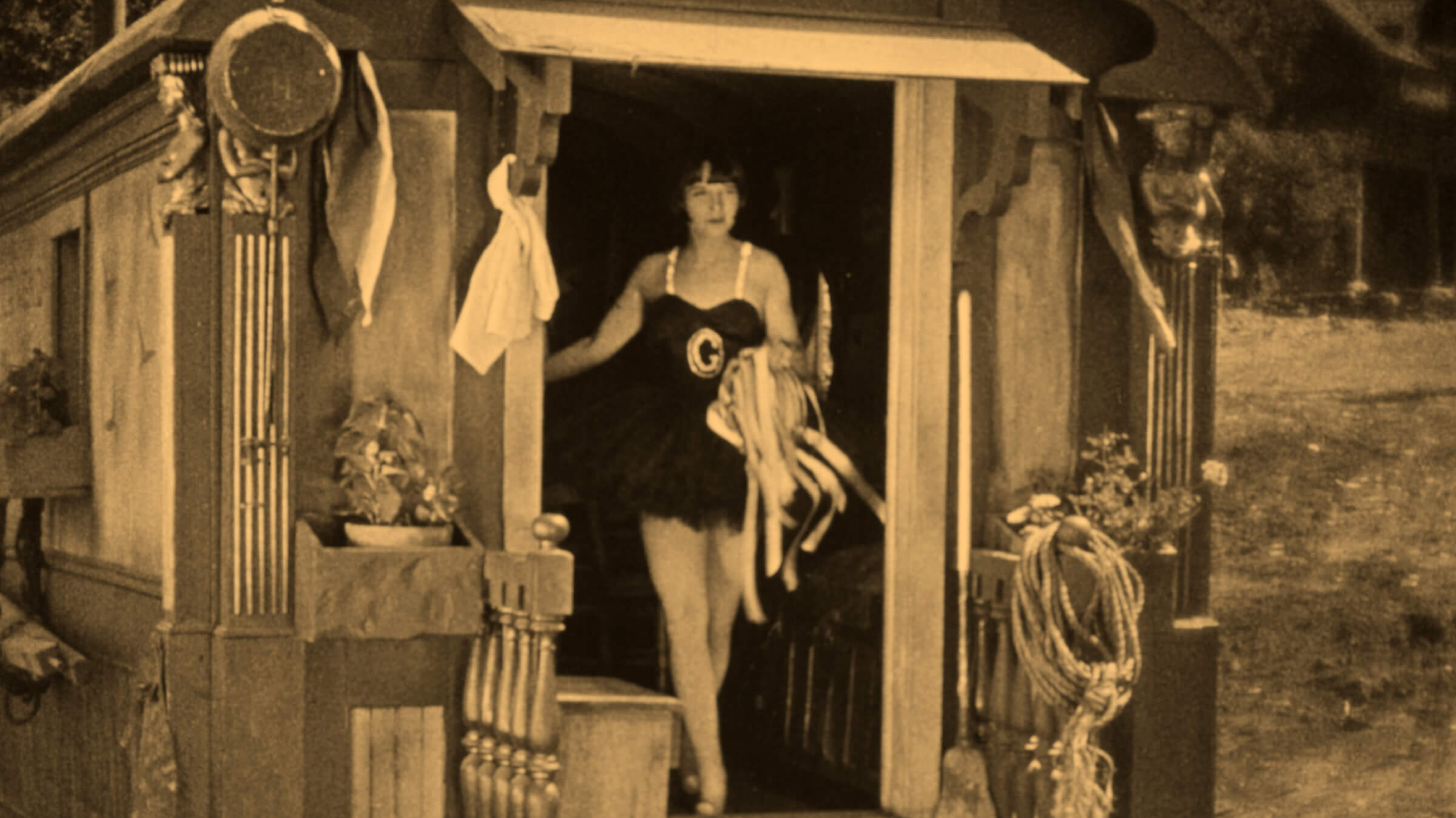Screened with Get Your Man at SFSFF 2017
NOW WE’RE IN THE AIR TRAVELS THE WORLD
Silent films have a funny way of traveling the world. In 2016, the festival’s own Robert Byrne mentioned to English film historian Kevin Brownlow about a trip he was taking to Prague to visit the Národní filmový archiv, the Czech Republic’s National Film Archive, known for its extensive silent-era collection and for housing the only remaining nitrate copies of many American silent-era films. Brownlow provided Byrne with a list of titles he should ask about that included the long missing Now We’re in the Air, a World War I comedy about a pair of fliers who wander onto a battlefield near the front lines and get tangled up with a traveling circus and a spy. Though popular in its time, the film has been sought today as one of four missing films Louise Brooks made in 1927.
When Byrne inspected the contents of film cans labeled Rif a Raf, Politi (the Czech title for Now We’re in the Air), he found it had only partially survived, with scenes out of order, some nitrate decomposition, and Czech intertitles. The archive had held the print, at least this twenty-minute chunk of it, since 1971 when it was repatriated to Czechoslovakia by the Museum of Modern Art in New York City. Why MoMA had a Czech-language title is unknown, but then silent films have a funny way of traveling the world.
One of a number of aviation-themed stories released in 1927, Now We’re in the Air incorporates leftover aerial and battle footage from Wings, visible in the Armistice scene in the last reel.
Shot between August 1 and September 8 at Paramount’s studio in Hollywood, the production also made use of a local ranch, an airfield, and an amusement pier in Venice, California.
Fifteen airplanes were hired, among them a seventy-six-foot Martin Bomber, which was deliberately wrecked in one of the film’s “big thrill scenes.”
The film’s cinematographer Harry Perry photographed two other notable aviation pictures, Wings (1927) and Hell’s Angels (1930), and was nominated for an Academy Award in cinematography (with Tony Guadio) for the latter, produced by Howard Hughes.
Raymond Hatton and Wallace Beery were a popular comedy team in the late silent era and Now We’re in the Air is one of the duo’s “service comedies.” The year prior, Paramount released Behind the Front and We’re in the Navy Now, both directed by Brooks’s husband, Eddie Sutherland.
Early on, William Wellman, James Cruze, and even Mauritz Stiller were announced as director but Frank R. Strayer was eventually assigned the project. Also an actor, writer, and producer, he has directing credits totaling ninety titles, including thirteen movies in the series based on the Blondie comic strip.
Brooks plays twin sisters—“Griselle” raised German and “Grisette” raised French—who are the love interests of the two goofy fliers. Only Grisette appears in the surviving fragment, in a black tutu. The French actor and silent-era director Émile Chautard plays Brooks’s father, the carnival barker, and the stern-faced Fred Kohler has an uncredited appearance as an officer.
Released as sound was coming in, Now We’re in the Air almost had dialogue scenes added to it, according to Brooks. The distinction of the first Paramount film with added dialogue actually goes to another picture featuring Brooks, 1928’s Beggars of Life.
Despite its reliance on crude humor, the Beery-Hatton film was generally liked by the critics and did big box office wherever it showed. It enjoyed an extended run in New York City and ran for a month in San Francisco, at a time when most new releases played only one week. It opened simultaneously in five theaters in Boston, where one reviewer wrote that the audience “was so moved by mirth that they were close to tears.”
Several reviews singled out Brooks, with the New York Post sardonically noting, “Louise Brooks wanders in and out between gags. She is very beautiful. She is especially beautiful when seen beside Mr. Berry.”
All’s well that ends well. Mae Tinee, the cine-pseudonymously named Chicago Tribune critic, put it this way: “Louise Brooks as twins, is—are—a beautiful foil for the stars and if you think she doesn’t marry both of them before the picture ends, why, cogitate again, my darlings.”
Though silent, it continued to be shown into the early sound era. In January 1930, it played Fairbanks in a pre-statehood Alaska, and, in December 1931, in the city of Darwin in Australia’s Northern Territory. Now We’re in the Air then faded into obscurity, until a hunch led to surviving fragments in Prague.
Presented at SFSFF 2017 with live music by Stephen Horne
***

